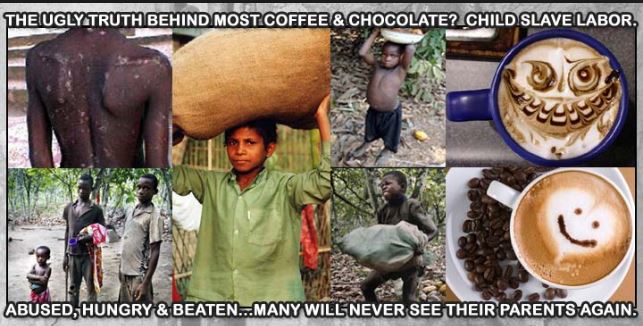
In a ruling that comes as a welcome surprise to watchers of corporate scofflaws, the US Supreme Court has thrown out a request by global corporate giants Nestle, Archer Daniels Midland Co and Cargill to dismiss a lawsuit alleging they were complicit in child slavery operations in connection with their Ivory Coast cacao plantations.
By rejecting the request, the U.S. Supreme Court decided to let stand a December 2014 ruling by the 9th U.S. Circuit Court of Appeals in San Francisco that refused to dismiss the suit.
According to the plaintiffs, who originally hail from the neighboring nation of Mali in West Africa and who claim to have been enslaved as children, the companies all participated in serial human rights violations via their involvement in buying cocoa from Ivory Coast. The suit further alleges that the companies and their representatives were aware the problem existed yet nevertheless offered financial and technical assistance to local cacao farmers in order to be guaranteed cheapest source of cocoa.
The Roberts Court’s rejection of Nestle’s request to dismiss the suit came as a surprise because as recently as 2013 the Court had upheld the precedent that lawsuits for violations of international law that occurring in foreign countries cannot be pursued in the U.S.
But despite this court’s record and reputation for consistently ruling on the side of business interests, they took a different tack this time around, and some court-watchers think they know why: The issue of child slavery, even in the service of multi-national corporate greed, might be a bridge too far, even for the solidly pro-Chamber of Commerce Roberts Court.
“The U.S. Supreme Court draws the line at child slavery,” as the website Legal Reader put it so succinctly. “Like most slavery operations, cocoa slavery victims are drawn from nearby poor countries with false advertising promising a good job and enough income to send money home. The slaves are boys who, like all slaves, are immediately “broken”–broken physically and mentally—to make them docile. Boys who are rebellious or are caught trying to escape tend to disappear.”
So it’s good to know there is a line over which multinational corporations cannot cross–at least when the facts of their malfeasance comes to light–even if that line is so low that it is child slavery.
Perhaps something else that should be brought into the light in regard to this case is just how common slavery is in the production of cacao. By some estimates over 70 percent of the world’s cacao beans are produced using slave labor. And the fact that those slaves are often children–who are easier to control than adults–should make us think twice when we are sitting around eating chocolate Easter bunnies with our own kids.
Were it but for an accident of geography, your kid could be having a very different experience with chocolate.
To learn more about cacao slavery, go to: http://www.foodispower.org/slavery-chocolate/
They also have a list of where various chocolate companies source their cacao, but generally recommend avoiding any from West Africa. Full list here: http://www.foodispower.org/chocolate-list/
http://www.naturalnews.com/053100_Nestle_child_slavery_cacao_harvesting.html
